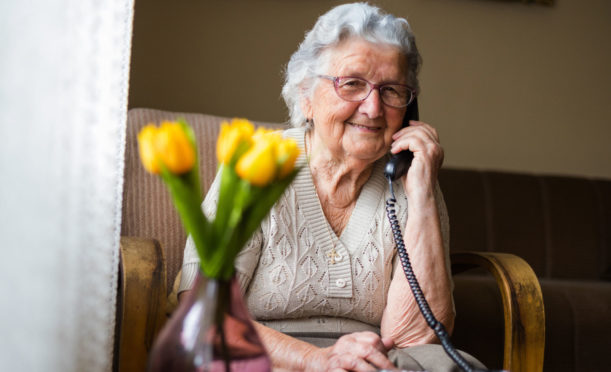Do you have older relatives who may be feeling isolated?
People in the older age groups are already at risk of loneliness and isolation, particularly those living alone who have no home internet access, so, many could be feeling extremely cut off right now.
Ensuring older people have the food and prescriptions they need is important – but so too is caring for their mental health. Depression and anxiety can widely affect these age groups too, even if we tend to talk about it less.
So, how can we support isolated elderly relatives from afar? Here are 10 ways to help.
1. Create a check-in rota with other family members
Could you create a rota with your family, so that somebody checks in with them every day? You might not be able, or have the capacity, to make daily calls yourself. Making it a shared effort is good for everybody’s wellbeing – and you’ll all get to feel more connected as a result.
2. Talk about fun and distracting things on the phone
When you do have those phone check-ins, try to avoid just talking about the pandemic situation every time. Some light-hearted distraction can work wonders for all of us. Not sure what to talk about? How about TV show storylines, ask about their favourite books, share updates on funny things the kids have been doing and those “creative” dinners you’ve been concocting.
3. Give them a list of handy helplines
There’s plenty of support out there for isolated elderly people during the pandemic – but if they don’t have wifi or a smartphone, they may not know about it. Use Google to find them a list of phone numbers that could be helpful if they find themselves struggling for any reason.
For example, Age UK, Independent Age and Mind all have helplines; some have befriending services that will match them with a volunteer for friendly phone chats too. Community volunteer initiatives, such as Covid-19 mutual aid groups, are cropping up all over the country too. Many are using Facebook pages to co-ordinate – so scope out key contacts for their area.
4. Let them know that help is available
Your relative may be aware of the advice for over-70s to stay home, but they might not know help is available if they’re running out of essentials, or need to pick up a prescription. Or perhaps they don’t want to bother anybody or be a burden.
Make sure they know that support is available, and asking for help will not make them a burden – in fact, it is encouraged for everybody’s sake. This is where those neighbourhood support schemes can come in handy. Local councils and the government are also coordinating support for the vulnerable and over-70s.
5. Have a chat to them about scams
You don’t want to add to any anxiety, but it’s a good idea to have a chat with elderly relatives about scams. Unfortunately fraudsters do seize on any chance to con people, so make sure they know that nobody legitimate will ever cold call or ask them for money or bank details over text, phone, email or at the door.
6. Encourage them to remain physically active at home
They may be missing their walks to the shops or swims and zumba. Staying active is vital for all of us to stay healthy, mentally and physically. Chat to your relative about ways to keep active at home. Inspire them with some of the things you’ve been doing yourself. If their mobility is limited, chair exercises and simply pottering in the garden (if they have one) are great.
7. Help them take up a new hobby
Ask them if there’s a craft they’ve always fancied trying, or activities they enjoy. Perhaps cross-stitch, grown-up colouring books, or even just a stack of crosswords. Right now, it’s still possible to order many things online for home delivery, so perhaps you could organise a fun care package.
8. Involve them in fun group calls
We may be physically cut off, but thanks to apps and the internet, people are still finding novel ways to “socialise”, with everything from online pub quizzes to dance parties – which your elderly relative might find fun too. If they don’t have a smartphone or computer, is there a way for you to simply dial them in on a group call to chat on speakerphone?
9. Share some self-help anxiety tools with them
Many of us now have a string of self-help tools for managing stress and anxiety – from meditation and yoga, to breathing exercises and tapping. Your elderly relative may not be as familiar with all these things, but chances are they could benefit just as much.
How about talking them through a simple breathing exercise? Breathing in deeply to the count of five, then holding for another five, then breathing out to the count of five – sitting or lying down to do this for a few rounds can really help with feeling calm.
10. Plan a lovely visit for when this is over
We’re all just taking things day by day right now. But for anybody feeling very cut-off and isolated, a little reminder that it won’t be forever might bring lots of comfort. Tell them about the visit you are planning when we come out the other side of this, and how much fun you’re all going to have together.










